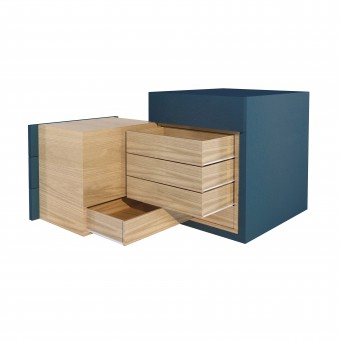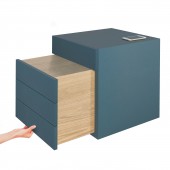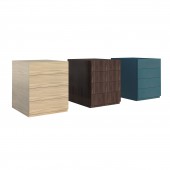
| THE AWARD |
| CATEGORIES |
| REGISTRATION |
| SUBMIT YOUR WORK |
| ENTRY INSTRUCTIONS |
| TERMS & CONDITIONS |
| PUBLICATIONS |
| DATES & FEES |
| METHODOLOGY |
| CONTACT |
| WINNERS |
| PRESS ROOM |
| GET INVOLVED |
| DESIGN PRIZE |
| DESIGN STORE |
| THE AWARD | JURY | CATEGORIES | REGISTRATION | PRESS | WINNERS | PUBLICATIONS | ENTRY INSTRUCTIONS |
Roentgen Nightstand by Nataliia Pleshkova |
Home > Winners > Design #102337 >Interview |
 |
|
FS: What is the main principle, idea and inspiration behind your design?
NP: The inspiration came from the works of David Roentgen, German cabinetmaker whose design innovation in the creation of ingenious pieces of mechanical furniture with secret drawers and compartments operated by hidden springs and levers made him renowned throughout the ruling houses of 18th century Europe.
FS: What has been your main focus in designing this work? Especially what did you want to achieve?
NP: The main focus in designing this work has been reinterpretation of historical reference in terms of current trends, needs, materials, and modern technologies.
FS: Why did you design this particular concept? Was this design commissioned or did you decide to pursuit an inspiration?
NP: This particular concept has been designed to pursuit an inspiration.
FS: Is your design being produced or used by another company, or do you plan to sell or lease the production rights or do you intent to produce your work yourself?
NP: I am planning to sell production rights for Roentgen nightstand.
FS: Who is the target customer for his design?
NP: The design is simple and can be performed in a wide range of color and material combinations to fit smoothly in any modern interior environment and equipped with the functionality that a contemporary user needs - wireless charger and drawer charging ports. It is available in both a right and a left configuration.
FS: What sets this design apart from other similar or resembling concepts?
NP: Roentgen nightstand involves the owner in the process of unlatching and expanding it outward into the room to access a set of hidden drawers, which offer additional useful storage space and protection for personal belongings.
FS: Which design tools did you use when you were working on this project?
NP: The model was built in SketchUp, rendering was made in SU Podium.
FS: Is your design influenced by data or analytical research in any way? What kind of research did you conduct for making this design?
NP: The project is a result of research on works of 18th century cabinetmakers adapted in terms of current trends and needs in the field of furniture production, technologies, and design.
FS: What are some of the challenges you faced during the design/realization of your concept?
NP: The challenge was to integrate the idea of having a secret set of drawers in the modern nightstand, but at the same time not to create a massive piece of furniture as it was in the 18th century, and to make a construction stable when it expands outward.
FS: Thank you for providing us with this opportunity to interview you.
A' Design Award and Competitions grants rights to press members and bloggers to use parts of this interview. This interview is provided as it is; DesignPRWire and A' Design Award and Competitions cannot be held responsible for the answers given by participating designers.
| SOCIAL |
| + Add to Likes / Favorites | Send to My Email | Comment | View Press-Release |





